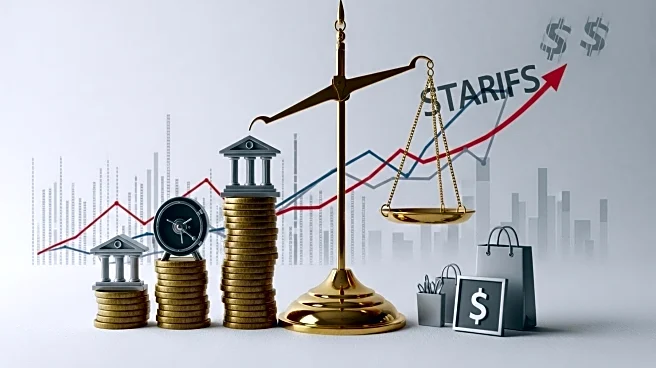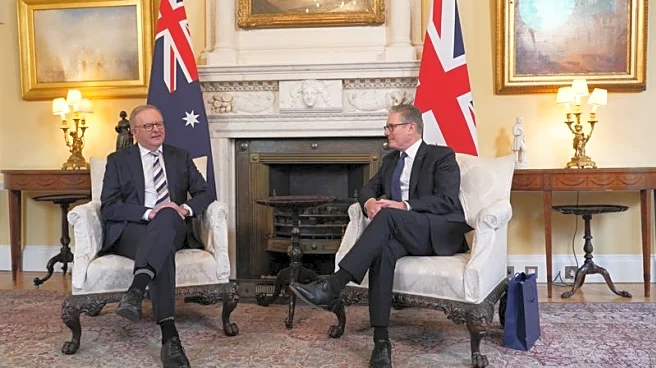What's Happening?
President Trump has reiterated his threat to impose a 100% tariff on foreign-made films, a move that has raised questions about its feasibility and impact on the global film industry. The President's statement, made on Truth Social, claims that the U.S. movie industry is losing out to foreign tax incentives. This threat follows a similar announcement in May, which lacked details on implementation. The U.S. film industry has seen major studios relocate productions to countries offering better incentives, such as the UK and Australia. Trump's comments have sparked concerns about potential disruptions in the industry, although the administration has not provided a clear plan for executing the tariffs.
Why It's Important?
The proposed tariffs could have significant implications for the U.S. film industry, potentially affecting production costs and international collaborations. If implemented, these tariffs might discourage foreign productions and impact the availability of diverse content in the U.S. market. The threat also highlights ongoing tensions between domestic and international film industries, as well as the broader economic policies of the Trump administration. The lack of clarity on the tariff's execution raises concerns about its legal and practical feasibility. Industry stakeholders, including studios and distributors, may need to reassess their strategies in response to these potential changes.
What's Next?
The film industry is likely to monitor the administration's next steps closely, as any concrete action on the tariffs could prompt significant shifts in production and distribution strategies. Studios may lobby against the tariffs, emphasizing the importance of international collaborations and market access. The administration's previous silence on the issue suggests that immediate action may not be forthcoming, but the renewed threat could lead to increased advocacy and discussions within the industry. The response from international partners and potential retaliatory measures could also influence the administration's decision-making process.











